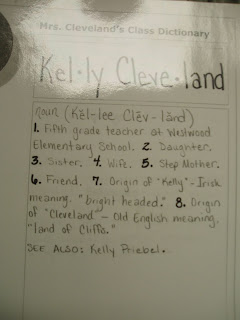Yeah! Elephant and Piggie's We Are in a Book is a great book to use to springboard a great writing lesson with your students to teach the parts of a book! I worked with first grade on this unit. We used the fiction book to learn all about the parts of a fiction book: front cover, title page, author, illustrator, publisher, place of publication, spine, and call number. I then told the kids we were going to put ourselves in a book just like Elephant and Piggie did! First, we also had to learn about the parts of a nonfiction book. I took a picture of the class and told the kids that we were going to be in a book that we wrote together about a topic of our choice. We learned about the table of contents, headings, subheadings, bold words, index, and glossary in nonfiction text. We labeled each of the parts of the nonfiction book using a big book so each feature was easy to find. We made a chart showing how each part of the nonfiction book helps the reader comprehend the text. It looked like this:
After we learned all about the parts of a nonfiction book, we brainstormed what we wanted to write about as a class and voted on the most popular choice. Then, we listed the major headings we wanted to cover in the book. We also listed two subheadings that told more specific information about each of the headings.
I divided the kids up in teams with clipboards and paper to write about each of the subheadings. After the teams finished their writing, I asked them to go back to their text and highlight words that the readers may need to have defined in the glossary of the book.
I then took all of the student work and typed it up into a SMART Notebook file for our SMART board. That way we could work with the file as a group. We then went back and added speech bubbles with the students' explanations of each of the parts of the nonfiction book. They explained to the reader in the speech bubbles how the table of contents, headings, subheadings, index, and glossary help the reader as they are reading a nonfiction book. I popped pictures of the kids into the story so it looks like they are saying what is in the speech bubbles.
I printed off a final copy of the class book in color and laminated and bound the book so each class could each keep their published copy in their classrooms.



















